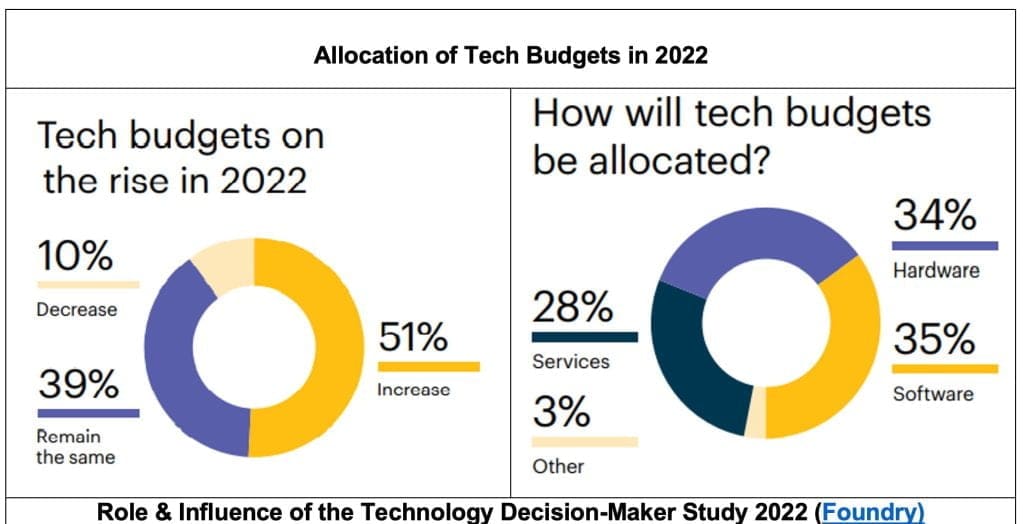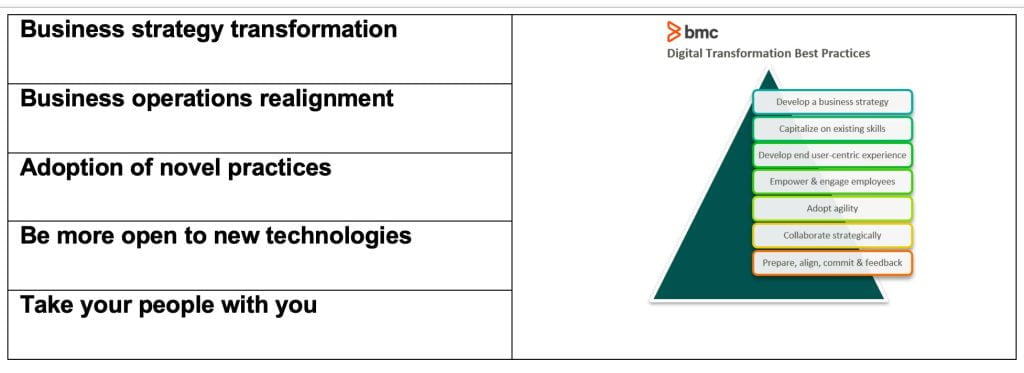In the new age of information, speed, and agility, the old operations, distribution, or technology management methods will not cut the chase. Instead, a change in mindset is needed, one that prioritizes a holistic digital transformation strategy and leverages real-time, intuitive, secure, and automated services. And at the same time, it appreciates empowering aspects of the old paradigm that spur growth. It may seem daunting, but it is achievable through a well-thought-out digital transformation strategy.
Table of Contents
ToggleIt leads us to a million-dollar question: What exactly is digital transformation? And how can your business transform itself?
We have mapped out a complete guide on digital transformation — it will help you understand what it is, why you should consider it, and how you should start. This guide will cover the following:
- Digital transformation
- Significance of DX
- Four pillars of DX
- DX strategy
What is digital transformation?
In a gist,digital transformation is when advanced technologies are embedded in all operations of a business. It covers all critical aspects of your business — including processes, operations, business models, and customer experience. Modern technologies like AI, ML, RPA, multi-cloud, and others leverage data to transform the entire business workflow. The benefits? Intelligent processing, faster and more informed decision-making, and real-time insights become the driving factors of prompt response to market disruption.
Mobile devices, social media, cloud computing, and the concept of the Internet of Things (IoT) are making the technological impact more transparent and valued. As a RedHat expert quotes, “Better living through software— that’s what digital transformation is.”
Although it may look simple enough, its implications are profound. As mentioned earlier, digital transformation is a mindset shift — and culture is a significant part of it. It ultimately translates into how your business operates, drives employee motivation, delivers customer value, and fosters growth at the foundational level. This eventually changes how customers perceive your brand, what they expect, and how you devise new-value creation opportunities.
What is the significance of a digital transformation strategy?
The impact of digital technologies may get overwhelming; however, it’s becoming more crucial than ever, particularly after the global pandemic. What was before limited to enabling customer experience is now moving beyond conventional dimensions. Every business wants to stay ahead of the curve — and shift from survival mode to continuous success.
According to research by Foundry, technology budgets will increase (up to 51%) or remain stable (39%) by the start of next year, with software seeing the most significant allocation of the budget (35%).

Leaders also recognize the potential scope of DX and hence are ramping up their investments in the sector. In their efforts to scale innovation via digital transformation, many tech leaders are absorbing the pandemic impact through investments in technologies like cloud and AI. As a result, the approach enabled many tech leaders with 5x faster growth and increased revenues.
Simply put, accelerated digital transformation is the reason we’re living in the digital age. Adapting to this differentiating factor can help you meet the ever-escalating customer, vendor, and partner expectations.
The 4 Pillars of Digital Transformation
Digital transformation is overarching, fueling a plethora of opportunities followed by challenges. Luckily, we can simplify it for you by laying the four pillars of digital transformation:

When focused on each pillar at a time, your DX journey will appear more achievable and meaningful.
Successful Digital Transformation Strategy
Initiating an enterprise-wide change is challenging. Therefore, it’s necessary to lay the robust groundwork for the transformation to attain tangible results. Here are five key areas that you should address to ensure continuous improvement for business success:
1. Business strategy transformation:
Make technology the centerpiece of your business strategy. Your choice of technologies will signify your prospects of business success.
2. Business operations realignment:
Ascertain the pain points of your customers and employees. Experiment with new ways that will help you satisfy unmet needs. Carefully addressing each need via intelligent process adoption will bring your business more agility and longevity.
3. Adoption of novel practices
Incorporate new practices backed by modern engineering capabilities. See technology and people from a different lens — that is more accessible and adaptable.
4. Be more open to new technologies
Don’t stay fixed to standard technologies. Make customer and business success your end goal. Adopt a modular approach to catalyze innovation and drive speed and scalability via rich ecosystem partnerships and sustainable change.
5. Take your people with you
While you strive to transform digitally, don’t forget to transform your people and culture. Equip your employees with emerging digital skills to prepare them for new ways of work, ensuring sustainable change. Additionally, foster a culture that encourages smooth integration of adopted technologies and capabilities to ensure a smooth transition.

A successful digital transformation strategy is practical and achievable. Following the above guidelines and capitalizing on your existing capabilities can make your path to digital adoption smooth and pain-free. Most companies are still looking to work towards transformation; however, they can be lost and it’s always best to look for reputable digital transformation consulting services.




